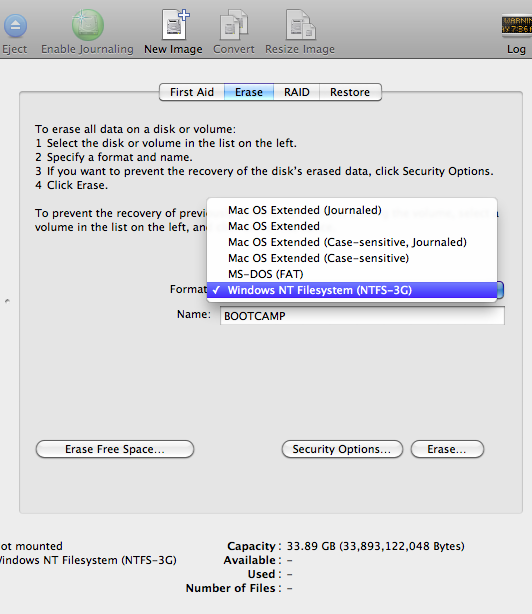

#Ntfs 3g fix command full#
This allows a specific user to have full access to the partition. noauto If noauto is set, NTFS entries in /etc/fstab do not get mounted automatically at boot. fmask and dmask Like umask but defining file and directory respectively individually. You can read more about umask permissions here. With 0022 new folders have the directory permissions of 755 and new files have permissions of 644. For Arch Linux, the default umask for root and user is 0022. Umask umask is a built-in shell command which automatically sets file permissions on newly created files. For a complete list, see ntfs-3g(8) § OPTIONS. Here are a few other options that are general common options for various Linux filesystems. dev/ NTFS-partition /mnt/windows ntfs-3g uid= userid,gid= groupid 0 0įor most, the above settings should suffice. If you are running on a single user machine, you may like to own the file system yourself and grant all possible permissions: dev/ NTFS-partition /mnt/windows ntfs-3g uid= userid,gid= groupid,umask=0022 0 0 Use the uid parameter together with your user id to enable user writing: To enable user writing, you have to specify the user who should be granted write permissions. dev/ NTFS-partition /mnt/windows ntfs-3g gid= groupid,umask=0022 0 0īy default, the above line will enable write support for root only. For example, for you to allow people in the groupid group to have access: In /etc/fstab you can also specify other options like those who are allowed to access (read) the partition. ntfs-3g will handle the translation of these permissions.
#Ntfs 3g fix command windows#
dev/ NTFS-partition /mnt/windows ntfs-3g uid= userid,gid= groupid,dmask=022,fmask=133 0 0Īlternatively, if the Windows permissions do matter to you, you can use the ntfsusermap(8) command to map Windows users to Linux ones. 755 for directories (dmask=022) and 644 for files (fmask=133) # Mount internal Windows partition with linux compatible permissions, i.e. The following example assigns the above permissions to a normal user:

It is recommended to keep these permissions in use for the NTFS partition as well if you use the partition on a regular basis. Permissions on a Linux system are normally set to 755 for folders and 644 for files. dev/ NTFS-part /mnt/windows ntfs-3g defaultsĐĐ run/media//), then that user or group will be able to read and write on that partition(s). With this method, if the parent folder that it is mounted upon has the proper user or group permissions (e.g. Using the default settings will mount the NTFS partition(s) at boot. This configuration can be done in the static filesystem configuration ( fstab) or by the use of udev rules. Your NTFS partition(s) can be setup to mount automatically, or pre-configured to be able to mount in a certain way when you would like them to be mounted. Note: -Q speeds up the formatting by not zeroing the drive and not checking for bad sectors. See ntfs-3g(8) for the available options. # ntfs-3g /dev/ your_NTFS_partition /mount/point The second option is to call ntfs-3g directly: The mount command by default will use /usr/bin/mount.ntfs which is symlinked to /usr/bin/ntfs-3g after the ntfs-3g package is installed. The mount type ntfs-3g does not need to be explicitly specified in Arch. # mount /dev/ your_NTFS_partition /mount/point Two options exist when manually mounting NTFS partitions.


 0 kommentar(er)
0 kommentar(er)
